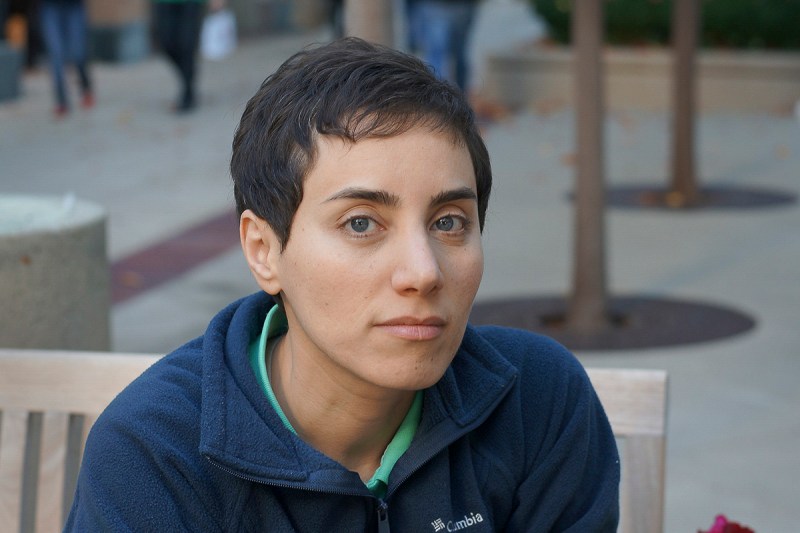Maryam Mirzakhani, Stanford mathematics professor and the only woman to earn the Fields Medal, died Saturday at age 40 after a four-year battle with breast cancer.
Iranian-born Mirzakhani won her Fields Medal, mathematics’ most prestigious honor, in 2014. The award is often equated to the Nobel Prize. Mirzakhani’s colleagues have honored both her academic achievements and her character.

“Maryam is gone far too soon, but her impact will live on for the thousands of women she inspired to pursue math and science,” said Stanford President Marc Tessier-Lavigne to Stanford News. “Maryam was a brilliant mathematical theorist, and also a humble person who accepted honors only with the hope that it might encourage others to follow her path. Her contributions as both a scholar and a role model are significant and enduring, and she will be dearly missed here at Stanford and around the world.”
A Stanford math professor since 2008, Mirzakhani specialized in theoretical mathematics, including topics such as moduli spaces, Teichmüller theory, hyperbolic geometry, ergodic theory, and symplectic geometry, according to Stanford News. She was fascinated with describing the geometric and dynamic complexities of curved surfaces such as spheres, doughnut shapes, and amoebas.
“What’s so special about Maryam, the thing that really separates her, is the originality in how she puts together these disparate pieces,” said mathematics professor Steven Kerckhoff at the time of Mirzakhani’s Fields Medal award. “That was the case starting with her thesis work, which generated several papers in all the top journals. The novelty of her approach made it a real tour de force.”
Mirzakhani’s work has implications for the study of other topics in mathematics, including prime numbers and cryptography, as well as the physics of the origin of the universe, quantum field theory and secondary applications to engineering and material science.
According to Stanford News, Mirzakhani was recently in collaboration with the University of Chicago’s Alex Eskin to find the trajectory of a billiard ball around a polygonal table—a challenge that has stumped physicists for over a century. The 200-page paper, published in 2013, was hailed as “the beginning of a new era” in mathematics and “a titanic work.”
“Maryam embodied what being a mathematician or scientist is all about: the attempt to solve a problem that hadn’t been solved before, or to understand something that hadn’t been understood before.,” said Ralph L. Cohen, the Barbara Kimball Browning Professor of Mathematics at Stanford, to Stanford News “This is driven by a deep intellectual curiosity, and there is great joy and satisfaction with every bit of success. Maryam had one of the great intellects of our time, and she was a wonderful person. She will be tremendously missed.”
Mirzakhani was born and raised in Tehran, Iran, where she attended an all-girls’ high school. Mirzakhani became the first girl to compete on Iran’s International Mathematics Olympiad (IMO) team. At the 1994 IMO, she earned a gold medal, and in 1995, she earned a perfect score.
She attended college at Sharif University in Tehran, then graduate school at Harvard University, where she was guided by Curtis McMullen, a fellow Fields Medal winner, who described Mirzakhani as filled with “fearless ambition.” After completing her doctorate and before coming to Stanford, Mirzakhani was an assistant professor at Princeton University and a research fellow at the Clay Mathematics Institute.
Mirzakhani is survived by her daughter, Anahita, and her husband, Jan Vondrák.
The University is set to organize a memorial in the fall, when students and faculty are back on campus.
Contact Shannon Yang at shannonyangsky ‘at’ gmail.com.
